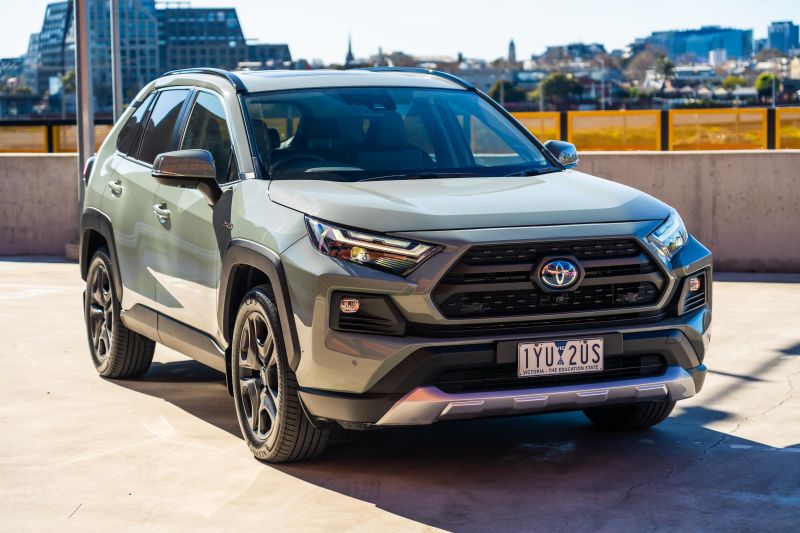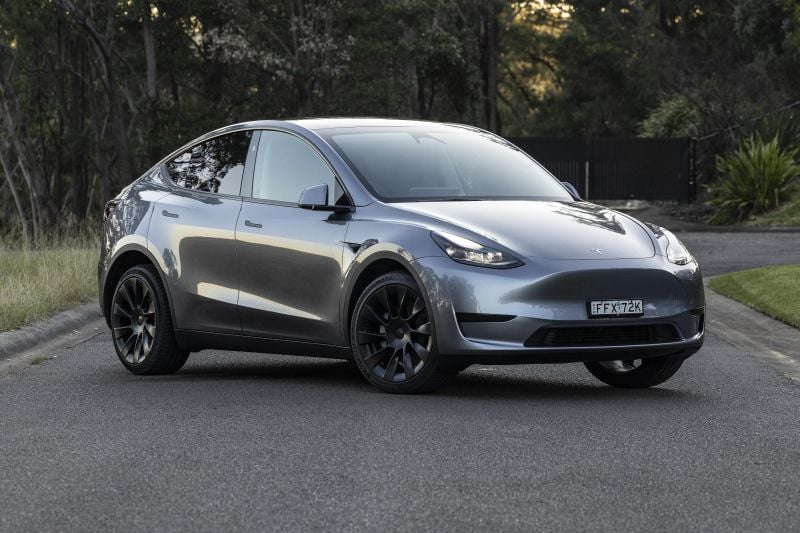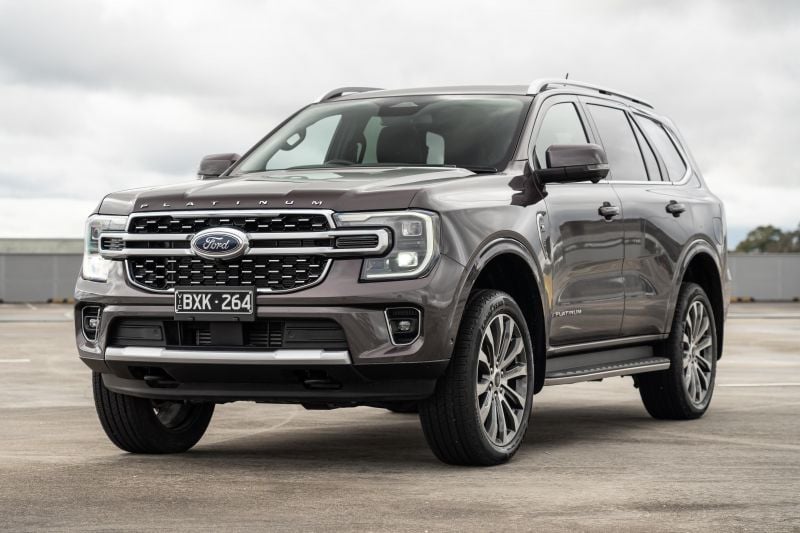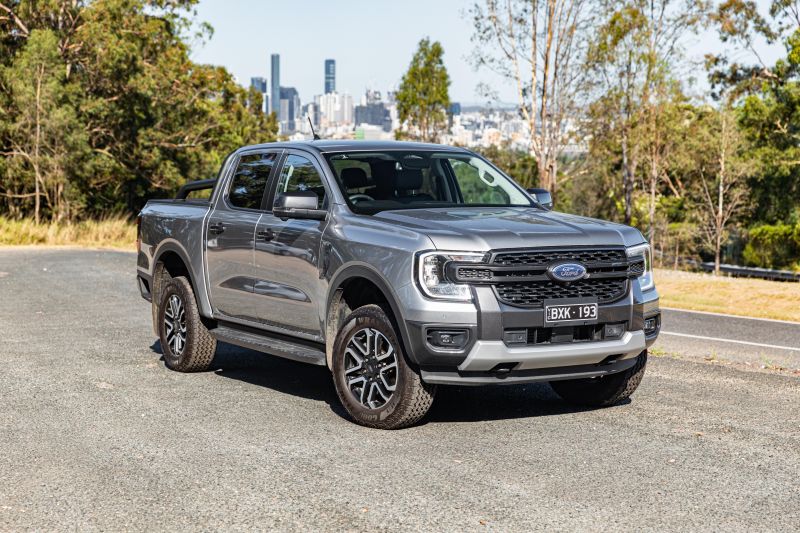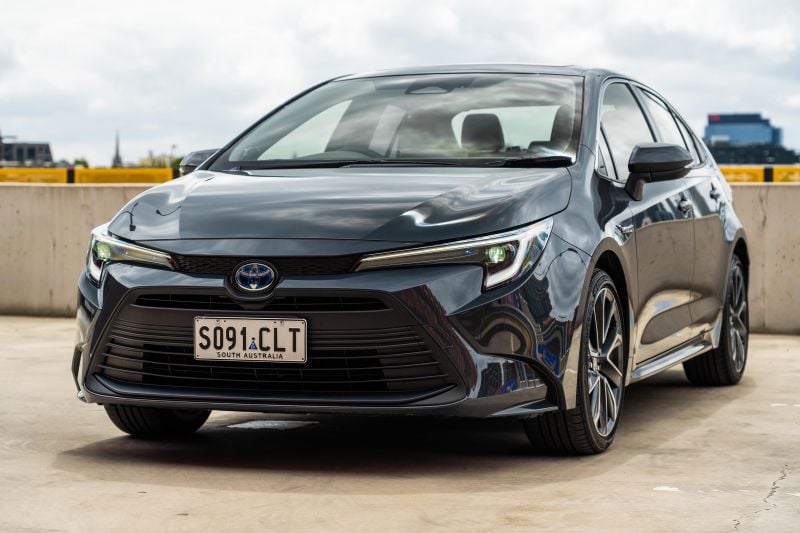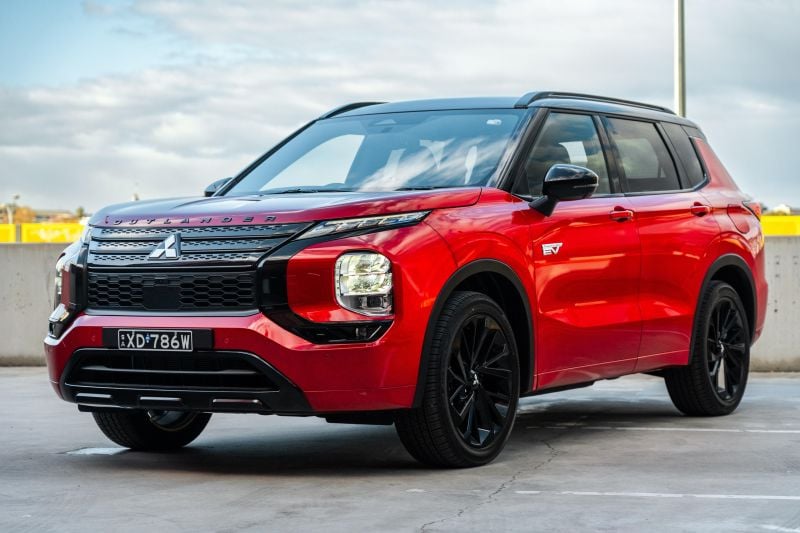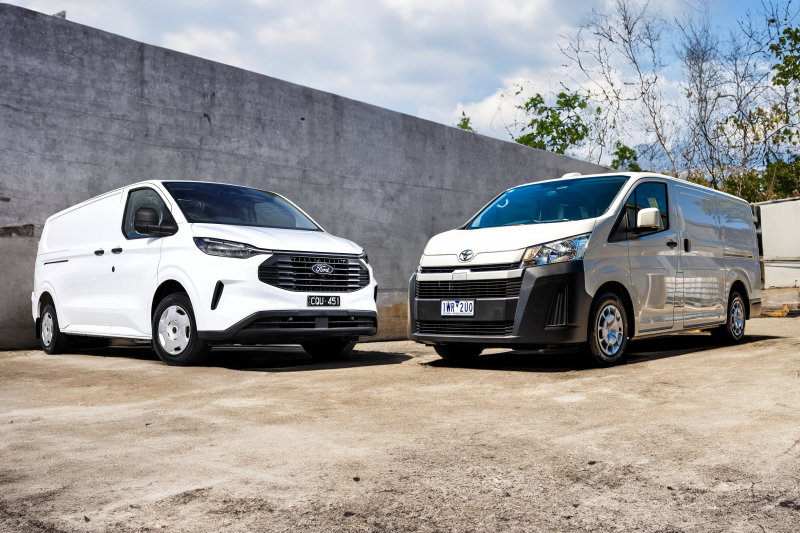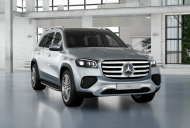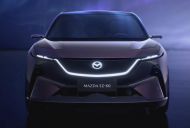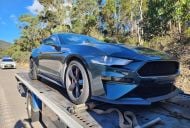Australia’s new vehicle market has set a second annual sales record in as many years, but the good times aren’t expected to last.
In 2024, 1,237,287 new vehicles were delivered in Australia, marking a 1.7 per cent increase on 2023, when a then-record 1,216,780 registrations were recorded.
However, there was a significant downturn in deliveries the final months of last year, as carmakers shortened extended wait times and inflation put pressure on private buyers.
“The second half of the year showed a concerning trend with sales in the Private segment falling to very low levels as interest rates and general cost of living pressures impacted Australian families,” said Federal Chamber of Automotive Industries (FCAI) Chief Executive, Tony Weber.
100s of new car deals are available through CarExpert right now. Get the experts on your side and score a great deal. Browse now.
Mr Weber highlighted the fact that continuing demand for less efficient SUVs and utes would lead to higher prices following the implementation of the nation’s first federally mandated new-vehicle emissions legislation.
“While overall consumer preferences remain clear with SUVs and light commercial vehicles continuing to dominate the market and especially the top ten sales, many vehicles in these segments are either difficult or expensive to decarbonise,” he said.
“This will prove to be a significant challenge in meeting the extremely ambitious targets of the New Vehicle Efficiency Standard (NVES) which began on 1 January 2025.
“The industry is responding to NVES by increasing the range of zero and low emission vehicles on offer. However, a continuation of current customer buying preferences will inevitably lead to the accrual of substantial penalties under the Government’s new scheme, which will create price inflation within the new vehicle market.”
While sales of petrol and diesel vehicles fell by 10.1 and 2.5 per cent respectively, Australian buyers are turning to fuel-efficient alternatives, with hybrid vehicle (HEV), electric vehicle (EV)and plug-in hybrid vehicle (PHEV) deliveries increasing by 76, 4.7 and 100.2 per cent respectively.
Brands
Toyota was Australia’s best-selling carmaker for the 22nd year in a row, and posted a new industry record of 241,296 sales – besting its previous high of 238,983 deliveries in 2008.
This was driven largely by the RAV4, which experienced its best year of sales yet and surpassed the once-dominant HiLux.
Ford moved past former partner Mazda to claim second in the sales race, even though the market-leading Ranger couldn’t match its 2023 pace.
Kia retained its fourth-place standing with a year-on-year increase, while Mitsubishi displaced Hyundai for the final top-five spot.
Both Subaru and Tesla slipped out of the top 10 in 2024 after experiencing a drop in sales, while a range of new models from Nissan and more affordable alternatives from GWM propelled those brands into the top 10.
BYD continued to make gains in the Australian market, vaulting to 17th place despite having just four vehicles in its local lineup.
Further down the list, Citroen’s time in Australia fizzled out with a paltry 147 deliveries, placing it behind expensive luxury brands such as Aston Martin, Bentley and Ferrari.
| Brand | 2024 sales | YoY difference |
|---|---|---|
| Toyota | 241,296 | +12.1% |
| Ford | 100,170 | +14.1% |
| Mazda | 95,987 | -4.0% |
| Kia | 81,787 | +7.4% |
| Mitsubishi | 74,547 | +17.4% |
| Hyundai | 71,664 | -4.7% |
| MG | 50,592 | -13.3% |
| Isuzu Ute | 48,172 | +6.2% |
| Nissan | 45,284 | +15.0% |
| GWM | 42,782 | +17.5% |
| Subaru | 40,604 | -11.9% |
| Tesla | 38,347 | -16.9% |
| Volkswagen | 36,480 | -16.8% |
| BMW | 26,341 | +0.6% |
| Mercedes-Benz | 24,831 | -13.9% |
| Suzuki | 21,278 | +24.6% |
| BYD | 20,458 | +64.5% |
| LDV | 16,022 | -24.8% |
| Audi | 15,333 | -19.5% |
| Honda | 14,092 | +2.6% |
| Lexus | 13,642 | -10.2% |
| Isuzu | 13,402 | -1.9% |
| Chery | 12,603 | +114.0% |
| Volvo | 8898 | -20.0% |
| Land Rover | 7910 | -6.1% |
| Porsche | 7029 | +16.1% |
| Renault | 5556 | -30.8% |
| SsangYong | 5393 | -9.6% |
| Hino | 5077 | -14.1% |
| Skoda | 5015 | -37.3% |
| Chevrolet | 4303 | +16.2% |
| Mini | 3982 | -7.2% |
| Ram | 3852 | -43.6% |
| Jeep | 2456 | -48.7% |
| Cupra | 2339 | -39.0% |
| Peugeot | 1896 | -24.6% |
| Polestar | 1713 | -30.3% |
| Fiat | 2005 | +2.8% |
| Genesis | 1400 | -26.9% |
| Jaguar | 743 | +27.9% |
| Alfa Romeo | 561 | -21.6% |
| Maserati | 377 | -40.9% |
| Lamborghini | 273 | +13.3% |
| Ferrari | 246 | +14.4% |
| Bentley | 183 | -20.1% |
| Lotus | 155 | -15.3% |
| Aston Martin | 154 | -1.9% |
| Citroen | 147 | -35.5% |
| McLaren | 95 | +11.8% |
| Foton Mobility | 68 | -4.2% |
| Leapmotor | 64 | N/A |
| Rolls-Royce | 54 | +10.2% |
| Dodge | 6 | N/A |
Models
The Ford Ranger became the first Blue Oval model since the EB and ED Falcon (1992/93) to claim back-to-back sales victories, even though its lead was threatened by the late-charging Toyota RAV4.
The Ranger eked out a larger gap to the Toyota HiLux in 2024, though Australia’s long-time best-selling ute is expected to be replaced by new generation within the next year, which could spur on a renewed charge.
Isuzu’s D-Max continued to be the best-of-the-rest, finishing the year as the fourth-best seller, ahead of the Mitsubishi Outlander and Ford Everest.
After no passenger vehicles made the top 10 in 2023, the Toyota Corolla rebounded to seventh in 2024, edging out the Mazda CX-5, MG ZS and Kia Sportage for the final 10 places.
Despite being Australia’s best-selling vehicle among private buyers in 2023 and finishing the year sixth overall, the Tesla Model Y slipped out of the top 10 in 2024.
| Model | 2024 sales |
|---|---|
| Ford Ranger | 62,593 |
| Toyota RAV4 | 58,718 |
| Toyota HiLux | 53,499 |
| Isuzu D-Max | 30,194 |
| Mitsubishi Outlander | 27,613 |
| Ford Everest | 26,494 |
| Toyota Corolla | 24,027 |
| Mazda CX-5 | 22,835 |
| MG ZS | 22,629 |
| Kia Sportage | 22,210 |
| Tesla Model Y | 21,253 |
| Hyundai Tucson | 19,061 |
| Mazda CX-3 | 18,461 |
| Mitsubishi Triton | 18,077 |
| Isuzu MU-X | 17,978 |
| Nissan X-Trail | 17,494 |
| Hyundai Kona | 17,374 |
| Tesla Model 3 | 17,094 |
| Kia Cerato | 15,502 |
| Toyota Camry | 15,401 |
Segments
- Micro cars: Kia Picanto (5822), Fiat 500 (527)
- Light cars under $30,000: MG 3 (12,563), Suzuki Swift (6126), Mazda 2 (5365)
- Light cars over $30,000: Volkswagen Polo (2154), Mini Cooper (1559), Mini Aceman (445)
- Small cars under $40,000: Toyota Corolla (24,027), Kia Cerato (15,502), Hyundai i30 (12,682)
- Small cars over $40,000: MG 4 (6934), Volkswagen Golf (2929), Audi A3 (2375)
- Medium cars under $60,000: Toyota Camry (15,401), BYD Seal (6393), Mazda 6 (1354)
- Medium cars over $60,000: Tesla Model 3 (17,094), BMW 3 Series (2472), BMW i4 (2062)
- Large cars under $70,000: Skoda Superb (153), Citroen C5 X (39)
- Large cars over $70,000: BMW 5 Series (614), Mercedes-Benz E-Class (381), Audi A6 (280)
- Upper large cars: Porsche Panamera (66), BMW 7 Series (49), Mercedes-Benz S-Class (43)
- People movers under $70,000: Kia Carnival (10,080), Hyundai Staria (1363), LDV MIFA (474)
- People movers over $70,000: Volkswagen Multivan (543), Lexus LM (298), Mercedes-Benz V-Class (274)
- Sports cars under $80,000: Ford Mustang (1465), Subaru BRZ (980), Mazda MX-5 (662)
- Sports cars over $80,000: BMW 2 Series Coupe (1565), BMW 4 Series two-door range (802), Porsche Boxster (445)
- Sports cars over $200,000: Porsche 911 (783), Ferrari two-door range (185), Lamborghini two-door range (165)
- Light SUVs: Mazda CX-3 (18,461), Suzuki Jimny (9697), Toyota Yaris Cross (8206)
- Small SUVs under $45,000: MG ZS (22,629), Hyundai Kona (17,374), GWM Haval Jolion (14,238)
- Small SUVs over $45,000: Audi Q3 (5497), BMW X1 (4536), Volvo XC40 (3142)
- Medium SUVs under $60,000: Toyota RAV4 (58,718), Mitsubishi Outlander (27,613), Mazda CX-5 (22,835)
- Medium SUVs over $60,000: Tesla Model Y (22,835), Lexus NX (6123), Mazda CX-60 (4058)
- Large SUVs under $80,000: Ford Everest (26,494), Isuzu MU-X (17,978), Subaru Outback (10,227)
- Large SUVs over $80,000: Land Rover Defender (3209), BMW X5 (3,157), Range Rover Sport (2206)
- Upper large SUVs under $120,000: Toyota LandCruiser (15,257), Nissan Patrol (8293), Kia EV9 (568)
- Upper large SUVs over $120,000: BMW X7 (1135), Lexus GX (868), Range Rover (685)
- Small vans: Volkswagen Caddy (746), Peugeot Partner (493), Renault Kangoo (191)
- Medium vans: Toyota HiAce (12,082), Hyundai Staria Load (3503), Ford Transit Custom (3427)
- 4×2 utes: Toyota HiLux (7660), Isuzu D-Max (6163), Ford Ranger (4633)
- 4×4 utes: Ford Ranger (57,960), Toyota HiLux (45,839), Isuzu D-Max (24,031)
- Large pickups: Ram 1500 (3239), Ford F-150 (2428), Chevrolet Silverado (2389)
Sales by category
Includes Tesla and Polestar sales.
| Category | 2024 sales | Market share |
|---|---|---|
| SUV | 704,557 | 56.9% |
| Light commercial | 270,351 | 21.9% |
| Passenger | 221,937 | 17.1% |
| Heavy commercial | 51,306 | 4.1% |
| Total | 1,237,287 | – |
Top segments by market share
Includes Tesla and Polestar sales.
| Segment | 2024 sales | Change YoY |
|---|---|---|
| Medium SUVs | 287,637 | +7.2% |
| 4×4 utes | 203,176 | -2.7% |
| Small SUVs | 181,197 | +3.9% |
| Large SUVs | 150,249 | -0.7% |
| Small cars | 92,964 | +10.2% |
Sales by region
Includes Polestar sales to March, Tesla sales to June.
| State/territory | 2024 sales | Change YoY |
|---|---|---|
| New South Wales | 369,035 | -1.4% |
| Victoria | 328,307 | +0.3% |
| Queensland | 263,337 | +0.7% |
| Western Australia | 130,780 | +4.9% |
| South Australia | 80,789 | +2.3% |
| Tasmania | 20,332 | -3.9% |
| Australian Capital Territory | 17,586 | -5.1% |
| Northern Territory | 10,441 | +1.7% |
Sales by buyer type
Includes Polestar sales to March, Tesla sales to June. Excludes heavy commercial vehicles.
| Buyer type | 2024 sales | Change YoY |
|---|---|---|
| Private | 611,783 | -2.5% |
| Business | 450,372 | +4.4% |
| Rental | 68,301 | -4.9% |
| Government | 38,845 | +14.5% |
Sales by fuel or propulsion type
Includes Tesla and Polestar sales, excludes heavy commercial.
| Fuel type | 2024 sales | Change YoY |
|---|---|---|
| Petrol | 528,978 | -10.1% |
| Diesel | 369,842 | -2.5% |
| Hybrid | 172,696 | +76.0% |
| Electric | 91,292 | +4.7% |
| Plug-in hybrid (PHEV) | 23,163 | +100.2% |
Sales by country of origin
Includes Tesla and Polestar sales.
| Country of origin | 2024 sales | Change YoY |
|---|---|---|
| Japan | 378,911 | +9.8% |
| Thailand | 272,139 | +3.0% |
| China | 210,113 | +8.6% |
| South Korea | 157,760 | -2.4% |
| Germany | 57,544 | +1.2% |





